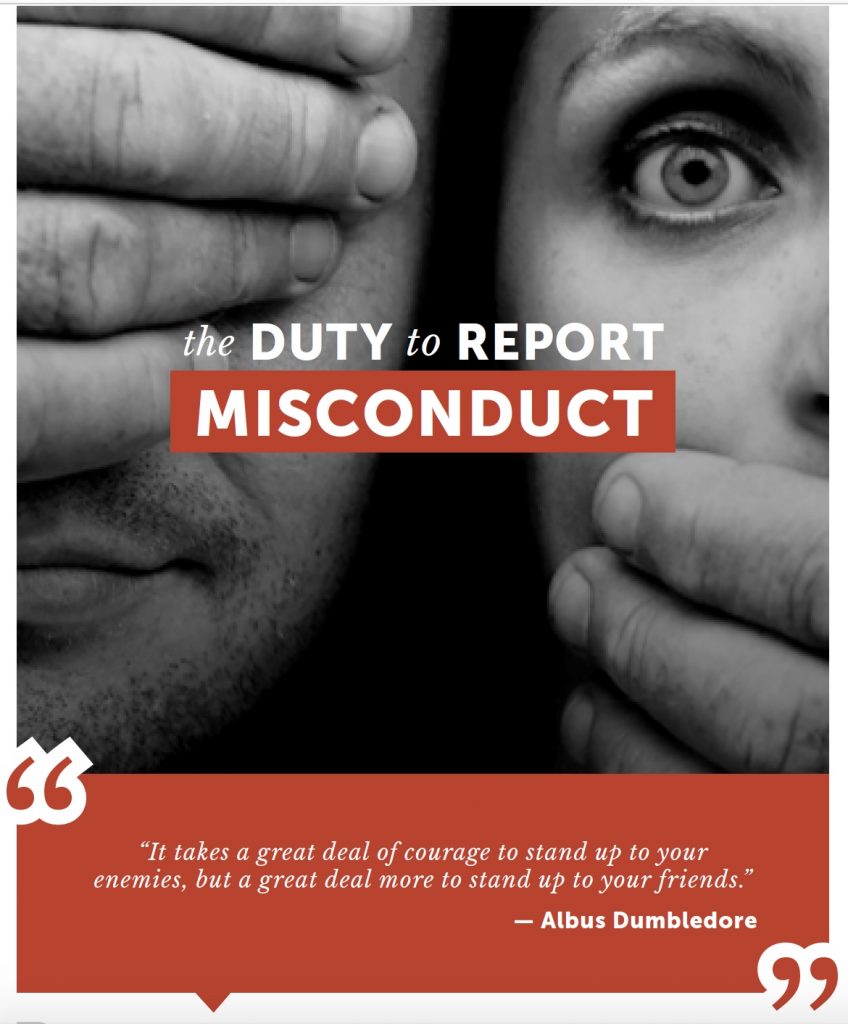The Duty to Report Misconduct
The Duty to Report Misconduct
“It takes a great deal of courage to stand up to your enemies, but a great deal more to stand up to your friends.”— Albus Dumbledore

Between the time former USA Gymnastics national team doctor Larry Nassar began abusing young athletes and the day the first criminals complaint was filed against him, nearly 20 years elapsed. During that time, numerous victims and their families told Nassar’s colleagues what was going on, but according to Kim Gaedeke, deputy director of Michigan Department of Licensing and Regulatory Affairs, no one ever filed a complaint with the Michigan Board of Medicine. The Board itself opened a file on Nassar after reading a newspaper account of the criminal charges against him, and within a few months had permanently revoked his license and fined him $1 million. By then, more than 160 victims had come forward with claims of abuse. No one knows the total number of patients who suffered or how many might have been spared if Nassar’s colleagues had spoken up.

Alarming cases like Nassar’s have focused attention as never before on the duty to report sexual misconduct. In April 2016, the Federation of State Medical Boards (FSMB) adopt-ed a formal Position Statement on Duty to Report. Less than a year later, FSMB published the results of its summit meeting, titled Duty to Report: Protecting Patients by Improving the Reporting and Sharing of Information about Health Care Practitioners. And earlier this year, an expert panel addressed Boundary Violations and the Duty to Report in a breakout session at the Federation’s annual meeting.
In this issue, we look at salient questions swirling around this topic: Why is the duty to report so important? Why have so many healthcare professionals failed to fulfill this duty? What can be done to remedy the situation?
ADDITIONAL ARTICLES
Understanding the Duty to Report
Nine Ways to Improve Reporting
View Other Posts
- Summer School: Reduce Stressors, Avoid Burnout
- Don’t Wait Until it is Too Late: How a Personalized Protection Plan© Decreases Violation Potential
- The What, Why, When, and How of Remedial Educational Interventions
- Revisiting Moral Courage as an Educational Objective
- If It Isn’t Documented, It Didn’t Happen
